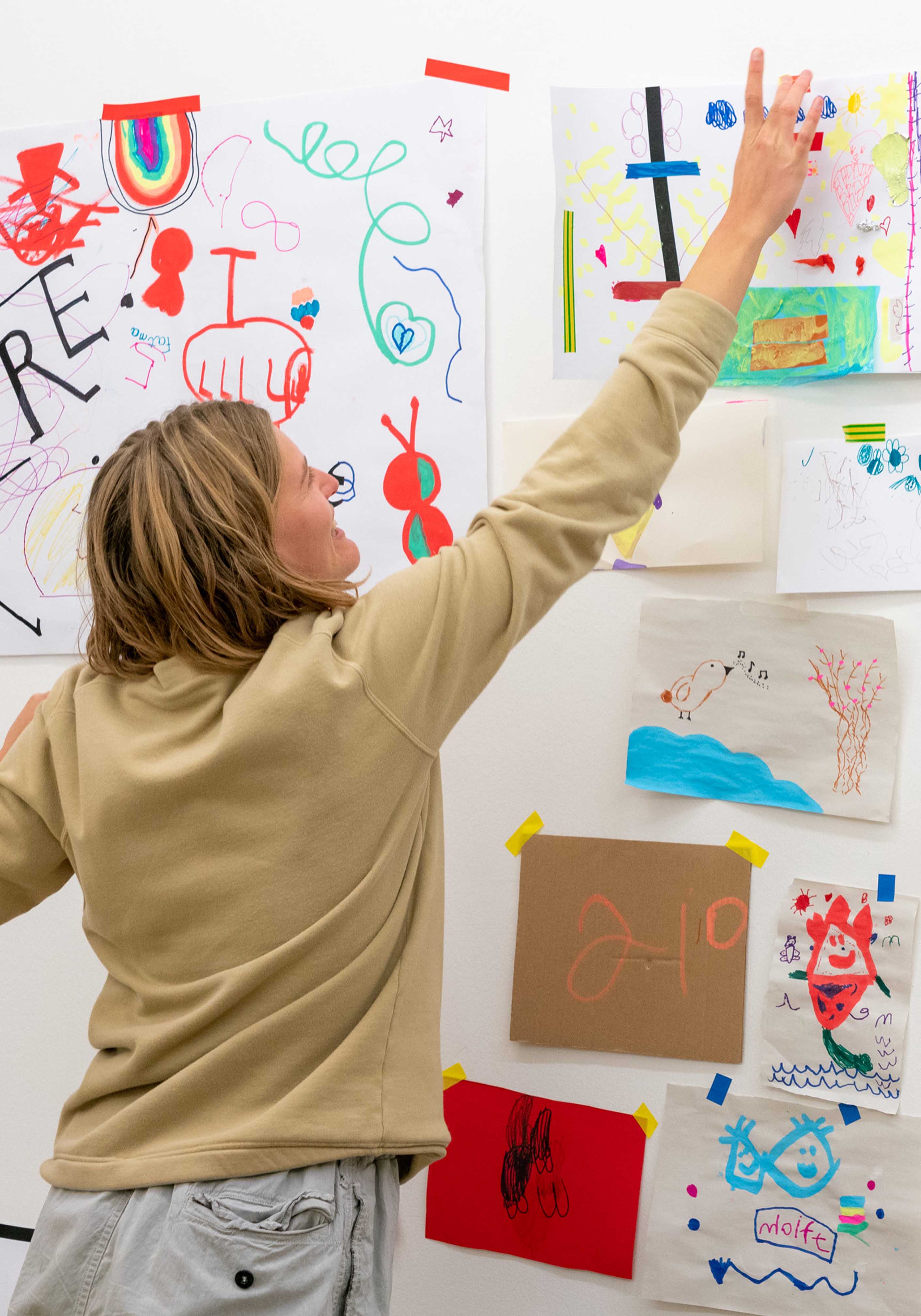Public Engagement
PEER Gallery
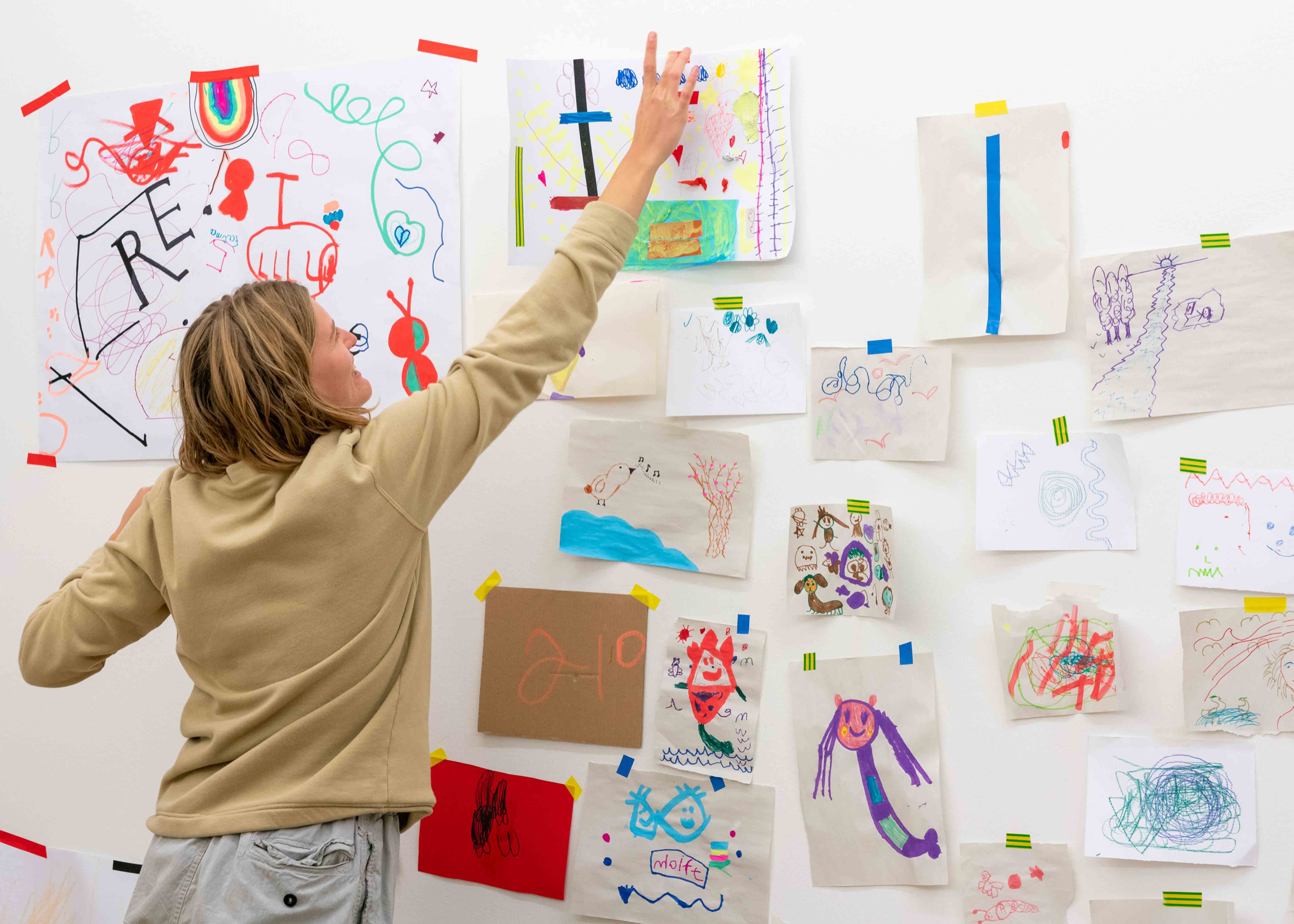
As part of a ‘Revision’ program by PEER to reimagine how the gallery operates, Engage Here delivered five workshops for local children in Hoxton.
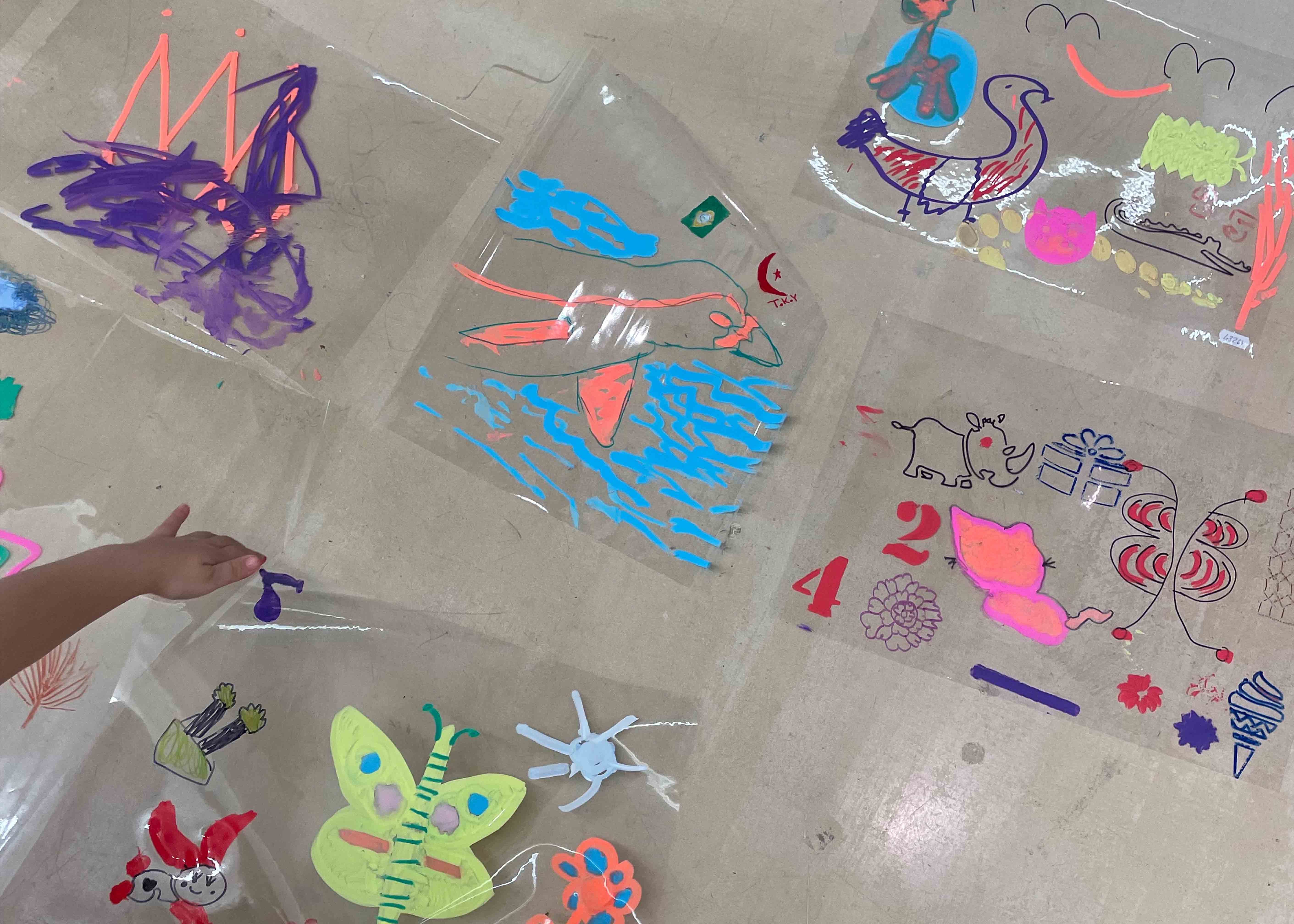
Week 1 began with a blank gallery space, an exciting opportunity to let the children transform it. Following an introduction to mark-making, the children were asked to stand and make instinctive drawings to simple prompts. I encouraged them to be free and pay attention to their whole body movement while drawing. We then examined the marks and discussed the techniques used; it was a fun opportunity for the group to share their favorites. Next, we considered sound, first in terms of the sounds made when their pens or pencils touched the paper, then how their drawings could react to external sounds. Building on this awareness, I asked them to draw in response to audio from nature, such as rainfall, trees in the wind, thunder, and animal sounds. I was pleased with how their sensory awareness manifested in the drawings.
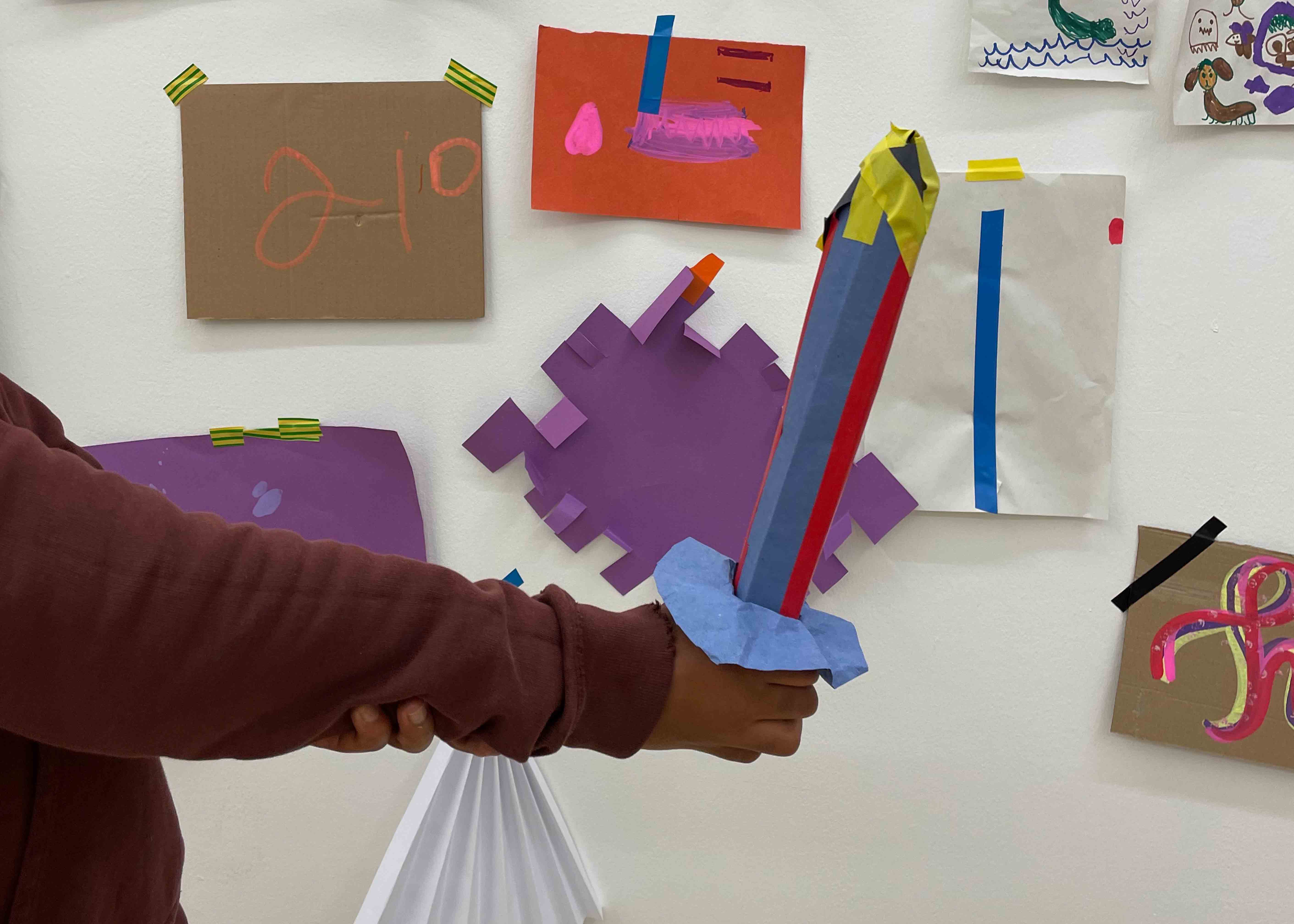
In Week 2, we pushed the children's drawing techniques further by introducing new media like acetate, tape, and vinyl. These materials have different limitations than pencils and pens and were less familiar to the children, creating a new working dynamic. The rolls of acetate acted as a collaborative canvas, moving around the room to embrace new input. This shared methodology resulted in a loss of inhibitions and an energetic rhythm to the children's approach. The tape and vinyl also proved successful; the group acknowledged the materials' predefined forms and reinterpreted them.
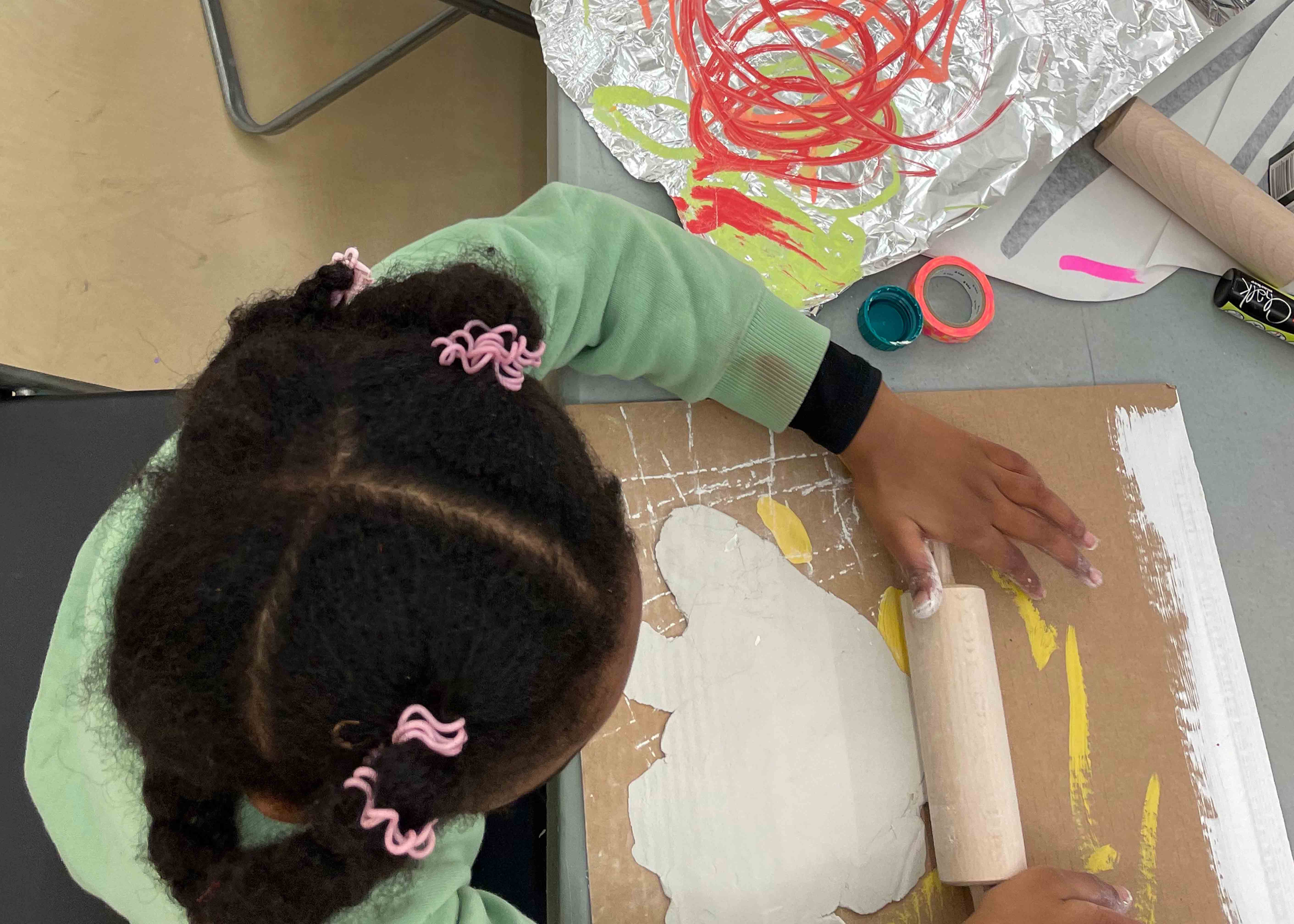
Week 3 was an opportunity to move from 2D to 3D. Instead of using an inherently three-dimensional material like clay, we explored form building through paper folding. The children discovered how folded flat shapes become mini sculptures with some structural adjustments. The unfamiliarity of the process lent itself to the intuitive approaches promoted in previous weeks, which was important for the later stage of the workshop: decoration. I was keen for the participants not to overthink this. The decoration was mainly achieved through collage, using many of the materials from Week 2, to embellish the sculptures with personality and character.

Week 4 saw the introduction of many new materials, some recycled, such as string and bottle tops, while others were natural, such as clay. Most of the group embraced the physicality of the clay, enjoying the different levels of effort required to shape it—for instance, the tough resistance needed when rolling it, in contrast to the ease of cutting it. Some continued to explore how paper could be exploited three-dimensionally.
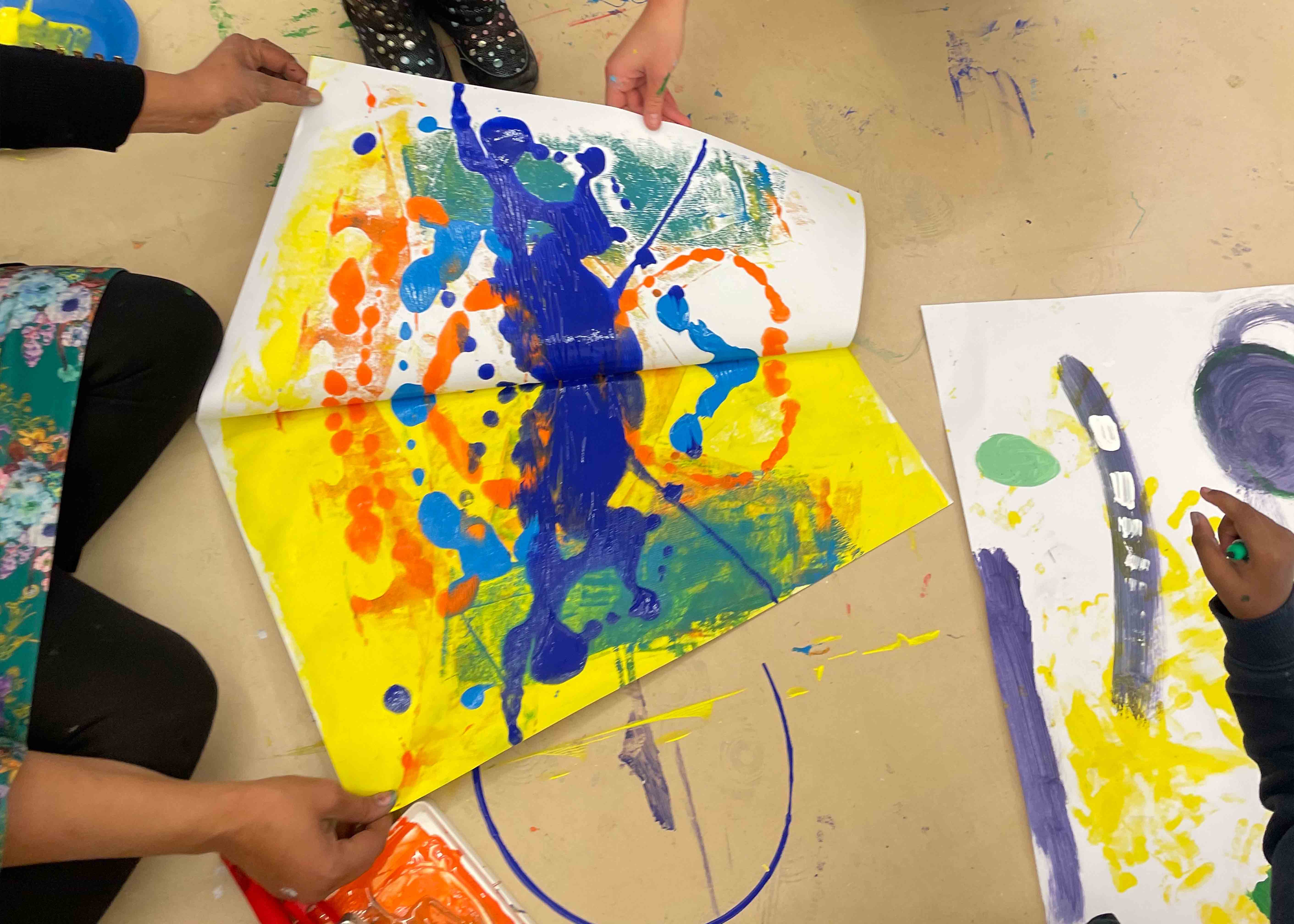
The final week was a chance to explore and develop techniques and methodologies from the previous workshops. The significant new introduction was paint, familiar to many, but it was delightful to see them use it inventively. Many children worked large-scale with rollers or even parts of their bodies. Some introduced folding techniques and string to create drawing machines that generated monoprints. It was great to watch individuals working together, either co-creating or providing instructions to stimulate unexpected output. This workshop also allowed for more engagement with parents, who highlighted the value of a free creative space in Hoxton. Many enjoyed using the local library but lacked the opportunity for such creative exploration without worrying about the mess. They were delighted to see the children explore their creativity and keen to encourage it at home
